ER docs’
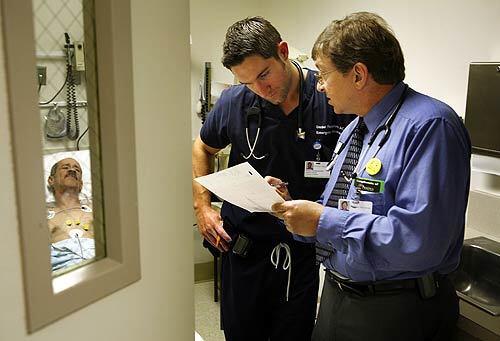
In UC Irvine Medical Center’s emergency room in Orange, department Director Dr. Mark Langdorf, right, confers with Dr. Daniel Thompson about Michael Recoud, who is suffering from extremely high blood pressure. When Langdorf began practicing emergency medicine more than 20 years ago, finding a specialist to help with a complicated case was easy. But today, specialists are much harder to find in many emergency rooms. (Mark Boster / Los Angeles Times)
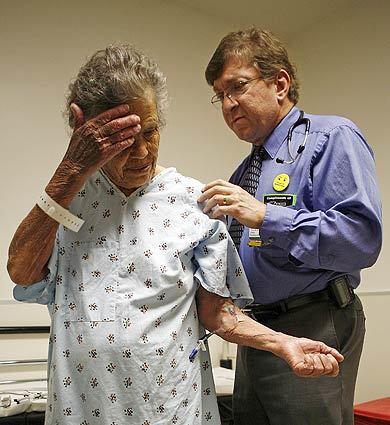
Langdorf examines Juliana Morales, 67, who was suffering back pain. Says Jim Lott of the Hospital Assn. of Southern California: If the state of Californias licensing and certification division came into our hospitals to examine whether we had all the specialists we say we do, they would shut down over half of the hospitals in Los Angeles County because we dont have coverage. (Mark Boster / Los Angeles Times)
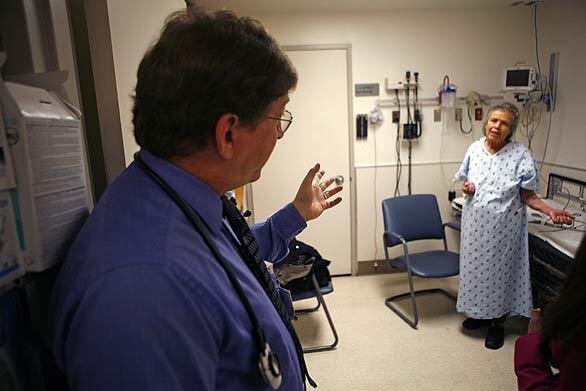
Langdorf talks with Morales before heading off to see another patient at UCI Medical Center. (Mark Boster / Los Angeles Times)
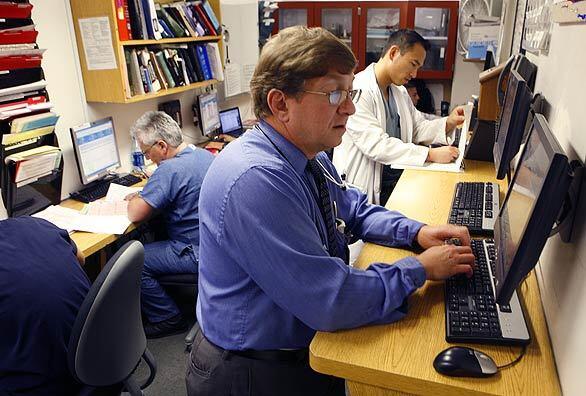
Langdorf updates files in the chart room at UCI. A 2006 survey by the American College of Emergency Physicians found that 73% of emergency departments in the United States had inadequate on-call coverage by specialist physicians. (Mark Boster / Los Angeles Times)
Advertisement
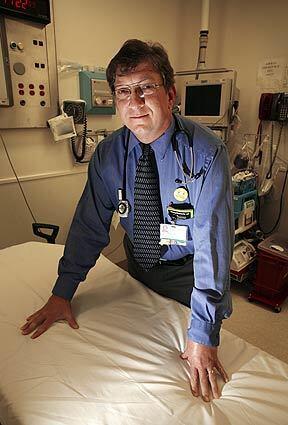
Calling 911 gets you a waiting room, says Langdorf, the emergency department director at UC Irvine Medical Center in Orange. It doesnt get you an emergency doc, and it certainly doesnt get you a right to a medical specialist. (Mark Boster / Los Angeles Times)
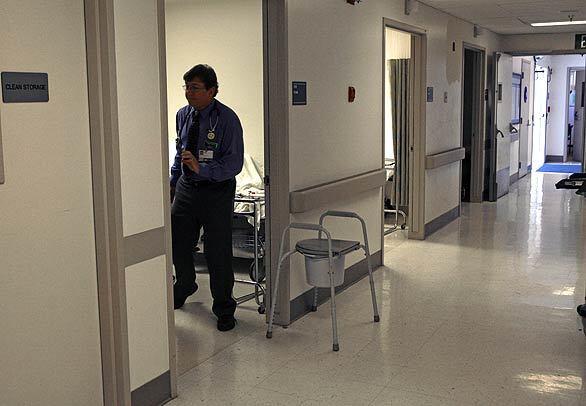
Langdorf makes his rounds, going through the cases and checking on patients. As a teaching hospital, UCI Medical Center like Harbor-UCLA and County-USC in Los Angeles can draw on doctors in training from the full roster of specialties. Thats not the case at community hospitals, the local, non-teaching facilities that are far more numerous. (Mark Boster / Los Angeles Times)







